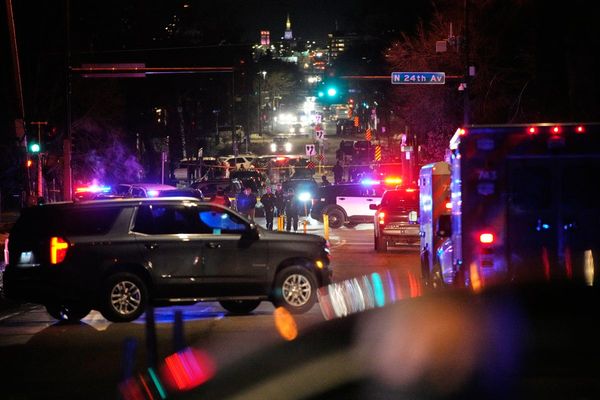The three forces that define today’s India were unleashed in the 12 months between August 1990 and August 1991. Thirty-three years later, it is these forces that are finally being rewarded with India’s highest civilian honour, the Bharat Ratna.
The first force, Mandal, was unleashed in August 1990, when the V.P. Singh-led government announced ‘backward caste’ quotas in central government jobs. While reservations for Scheduled Tribes and Scheduled Castes had been recognised in the Constitution itself, quotas for middle castes began in the southern States from the 1950s. Their adoption in the northern States was symbolised in the 1970s by Bihar Chief Minister Karpoori Thakur. And, in 1990, they became central government policy through the implementation of the Mandal Commission report.
The second force that defines today’s India is the building of a Ram temple in Ayodhya. The movement began in the early 1980s and was adopted by the Bharatiya Janata Party (BJP) as a political issue only later. As I argue in my book, Jugalbandi: The BJP Before Modi, L.K. Advani’s rath yatra on a converted Toyota, from Somnath to Ayodhya, that began in September 1990, was a signal to the movement faithful that the party was finally with them.
The third force unleashed on India was Prime Minister P.V. Narasimha Rao’s liberalisation. Like with Mandal and Mandir, the Market’s journey had begun earlier. Prime Minister Rajiv Gandhi had tried to free the economy from red tape but lacked the political skills to navigate reform. It was only in mid-1991 that P.V. Narasimha Rao, the most skilled of political operators, overcame his many political handicaps to finally open up the economy.
They define the leader too
These three forces of Mandal, Mandir, and Market continue to define India; indeed, they define Narendra Modi himself. The consecration of the Ram temple last month brought the decades-long movement to its culmination. Mr. Modi’s BJP now brands itself as a backward caste party. As the scholar, Nalin Mehta, has shown in his book, the New BJP, the party’s candidates and voters represent lower caste Hindus, not just upper castes. The third ‘M’, markets, is just as central to Mr. Modi’s politics. He is spending unprecedented amounts on the capital expenditure required for business to grow, and he has improved India’s ‘ease of doing business’. The recent choice of Bharat Ratna recipients — conferred on Karpoori Thakur, L.K. Advani, and Narasimha Rao — is the ultimate sign that Mandal, Mandir, and Market continue to define India today. I will leave it to others to draw lessons from the two other recipients of the Bharat Ratna, i.e., former Prime Minister of India and farm leader Chaudhary Charan Singh and agricultural scientist M.S. Swaminathan. Let me, instead, focus on the politician I know best: P.V. Narasimha Rao.
A forgotten Prime Minister
When I decided to write his biography in 2014, Indians had forgotten their Prime Minister from 1991 to 1996. An Ivy-League educated scholar on South Asian politics asked me who Narasimha Rao was. On my drive from Hyderabad airport to the office of Narasimha Rao’s son for our first interview, my cab driver had barely heard of him and could only say, “He’s the man after whom a flyover is named”. Rao had been disowned by his own party and forgotten by everyone else (Manmohan Singh being an honourable exception).
Yet, my research showed that Narasimha Rao needed to be resurrected. To help me were 45 cartons of his private papers and over a 100 interviews with those who knew him — from his cook to his physician to his finance minister. It turned out that Narasimha Rao was no bystander. He actively plotted, outmanoeuvring the parliamentary opposition, domestic capitalists, and especially his own Congress party, to open India’s economy to the world.
Narasimha Rao’s reforms were not confined to economics alone. The former External Affairs Minister reoriented India’s foreign policy towards the United States after the fall of the Berlin Wall; he brought in welfare schemes to the national level (thus being the forerunner of today’s labharthi politics). He also ended militancy in Punjab while managing it in Kashmir. Narasimha Rao had his failures. In the lead up to the demolition of Babri Masjid, the Prime Minister behaved like a politician rather than a statesman (though the allegation that he was part of the conspiracy is without basis). More damaging was his reaction to the anti-Sikh riots in 1984. As Union Home Minister, Narasimha Rao controlled the Delhi police and could have ended the violence. But, he chose to listen to the Prime Minister’s Office and do nothing. In my biography of Rao, Half Lion, I called it his “vilest hour”.
These errors apart, the sheer scale of the transformation Narasimha Rao brought about needs a larger audience. In particular, there are three lessons he holds for politicians today.
The first is that India grows best when politicians trust society rather than the state. In economics, this means being open to the global economy as well as the private sector. This was the common sense view across the world in 1991. Narasimha Rao’s genius was to translate this into common practice. Today, this free-market consensus is under threat. The U.S. — once a bastion of free trade — is mouthing tariffs and protectionism. And, for all the talk of “minimum government, maximum governance”, the central government seems to think that an economy grows best when the state’s hand is clearly visible.
The second lesson is that liberalisation-led growth is a precondition for welfare schemes. For all her talk of ‘garibi hatao’, Prime Minister Indira Gandhi spent very little to remove poverty; her government simply did not have enough money. What Narasimha Rao’s economic reforms did (albeit with a decade-long lag) was to cause a boom in tax revenue. This has enabled the government to spend amounts on the poor that was unthinkable earlier.
When asked about his economic ideology, Narasimha Rao replied, “My model is not Margaret Thatcher but Willy Brandt.” He was referring to the social democratic Chancellor of West Germany who, like Narasimha Rao, understood that free market capitalism and state-driven redistribution are two sides of the same coin.
A faith in harmony
The third, perhaps most important, lesson is harnessing the harmony embedded in Indian civilisation. Narasimha Rao was a scholar of Sanskrit and a devout Hindu, as the many astrological charts in his private papers show. But growing up in the Nizam’s Hyderabad state, he had Muslim friends. He was also well read in Koranic text and could speak Persian and Urdu with felicity. From this knowledge of both Hinduism and Islam, Narasimha Rao understood the challenges of co-existence, but was hopeful that it was possible.
Also read | How Narasimha Rao found an ally in Germany
Amidst Narasimha Rao’s private papers, I found a copy of the essay, Clash of Civilizations by the Harvard political scientist Samuel P. Huntington. Written in 1993, the essay paints civilisations at war with one another, in particular, Islam with the West. On the margins, in red ink and in flowing hand, Narasimha Rao had written for his own eyes only: “Why are there only Western examples being given where violence — on some pretext or the other — is the basic propensity”. Narasimha Rao argued that “there had been no religious wars in India” and felt that for every example of riots between Hindus and Muslims, there were counterexamples of non-violent co-existence. The ultimate lesson from Narasimha Rao may not be markets, foreign policy, or welfare. It may well be his faith in our civilisational ability to manage religious differences.
Vinay Sitapati is a Professor of law and politics and the author of Jugalbandi: The BJP Before Modi and Half Lion: How P.V. Narasimha Rao Transformed India







